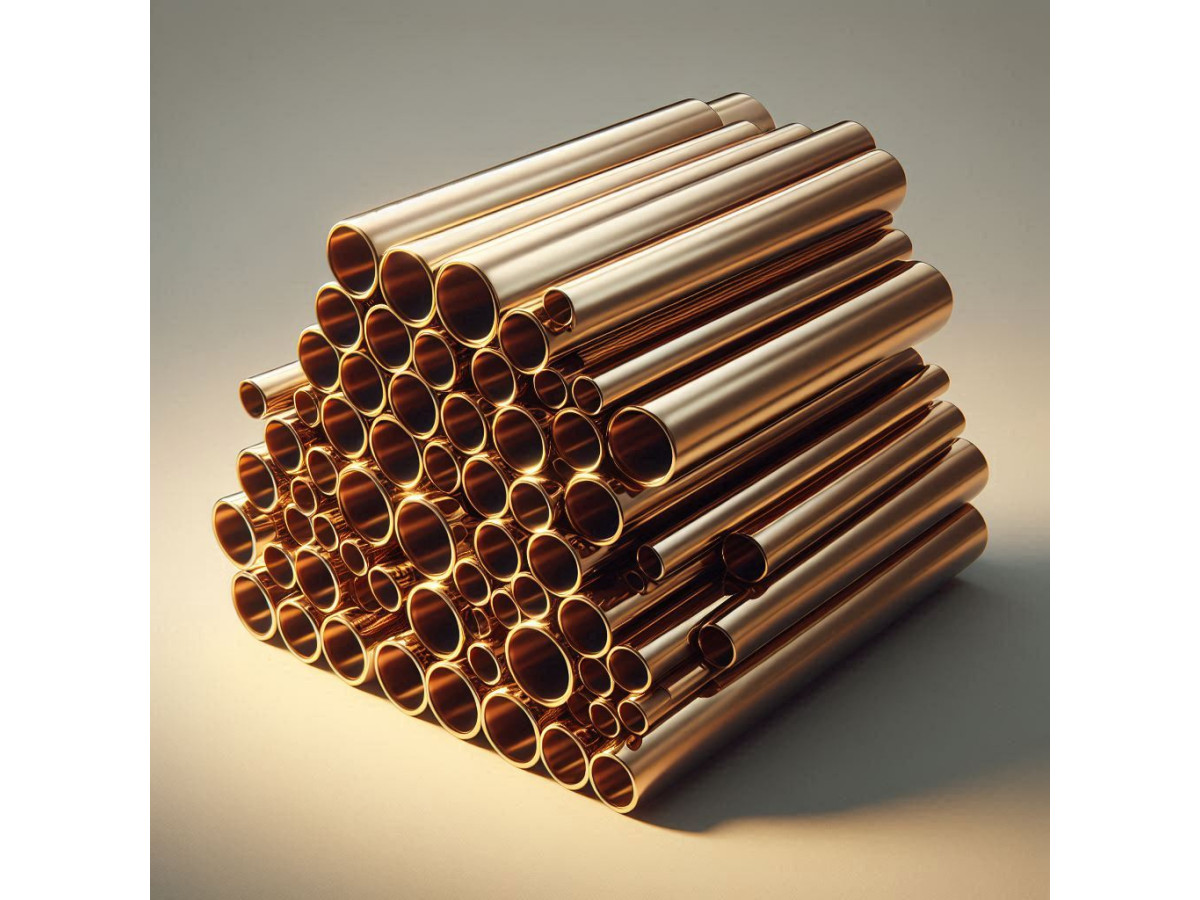When designing and installing pipeline systems made of brass, one of the key factors requiring special attention is the thermal expansion of the material. Brass, like other metals, is subject to changes in geometric dimensions due to temperature fluctuations. Understanding this process and properly accounting for thermal expansion allows for the creation of reliable and durable systems, avoiding deformations and damage.
Material Characteristics
Brass pipes are widely used in hot water supply systems, heating, and other engineering communications where significant temperature changes of the heat carrier occur. When heated, the metal expands, increasing in size, and when cooled, it contracts, returning to its original parameters. The coefficient of linear thermal expansion of brass is approximately 18-20×10⁻⁶ per degree Celsius, meaning an increase in length of 0.018-0.020 mm per meter for every degree increase in temperature.
In real operating conditions, temperature variations can reach 80-100°C, leading to substantial changes in pipeline length. For example, heating a ten-meter section of brass pipe from 20°C to 80°C will result in an elongation of about 12-15 mm. Ignoring this factor can lead to serious consequences: deformation of pipes, loss of tightness in joints, the appearance of cracks, and even complete system failure.
What Factors Should Be Considered?
The main factors affecting the thermal expansion of brass pipes include:
- The greater the difference between the minimum and maximum temperature in the system, the more significant the linear expansion of the pipe will be.
- Long straight sections are more prone to deformations due to thermal expansion than short ones.
- Rigid supports can hinder the free expansion of the pipe and cause stresses in the system. Flexible supports or compensators allow the pipe to move freely.
- Compensators (loops, bellows) compensate for thermal deformations and prevent damage to the pipeline.
- Different grades of brass have different coefficients of linear expansion.
- Thicker pipes and pipes with larger diameters have greater mass and, consequently, more linear expansion.
- Additional loads (vibration, soil pressure) can amplify deformations caused by thermal expansion.
- Ambient temperature, humidity, and aggressiveness of the environment also influence the behavior of the pipe during heating.
Compensating for Thermal Expansion
To compensate for thermal expansion during the installation of brass pipes, various technical solutions are used. The simplest and most common is the use of compensating loops or U-shaped compensators. These are specially designed bends in the pipeline that absorb deformation during metal expansion. It is essential to accurately calculate the dimensions of the compensator based on the expected elongation of the pipe.
Bellows and lens-type compensators are also widely used, which are installed on straight sections and can absorb significant thermal deformations. Their advantages include compactness and high efficiency; however, the cost of such solutions is higher than that of simple U-shaped compensators.
Installation Recommendations
Practical recommendations for installing brass pipes considering thermal expansion include:
- Use specialized calculators or software to determine the amount of thermal expansion of the pipe based on material, length, diameter, and temperature range.
- Ensure freedom of movement for the pipe at support points using sliding supports or compensators.
- When laying pipes through walls, ceilings, or other structures, leave sufficient gaps to accommodate thermal expansion.
- Sliding supports allow the pipe to move freely along its axis, minimizing stresses in the system.
- Fixed supports should be installed at points of change in the direction of the pipeline, at connection points to equipment, or at locations where pipe movement needs to be restricted.
- Choose compensators that match the diameter of the pipe and expected elongation.
- When installing, consider the direction in which the thermal expansion of the pipe will occur to avoid misalignments and damage to the system.
- Carefully check the tightness of all connections after installation.
- Use sealing materials resistant to high temperatures and aggressive environments.
- Periodically check the condition of the system, paying attention to leaks, deformations, and other deviations from the norm.
When designing systems made of brass pipes, it is important to remember that thermal expansion is a natural physical process that can and should be managed. Proper accounting for this factor during the design and installation phases allows for the creation of reliable systems with a long service life. It is especially important to pay attention to thermal expansion when installing long sections of pipeline and in systems with significant temperature variations.

